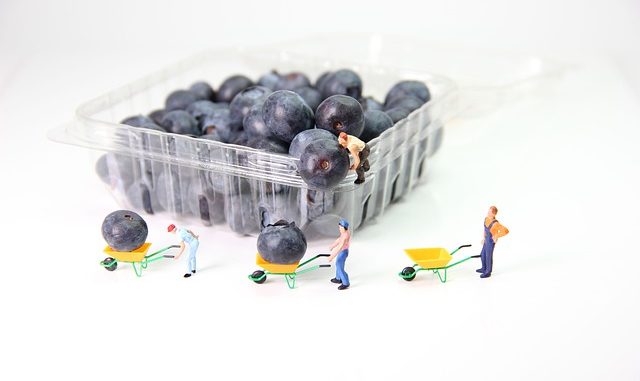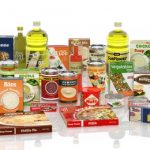
Modified atmospheric packaging or MAP for short is a packaging technique designed to keep produce as fresh as possible. It is also known by other terms such as protective atmosphere packaging, reduced oxygen packaging or just gas flushing for short.
The method is well established across the food industry because of the proven results in reducing the process of decay and extending the shelf-life of a food. In doing so food waste is substantially reduced and thus has a significant impact on the environment.
The technique has been applied successfully to all sorts of foodstuffs including meat, seafood, minimally processed fruits and vegetables, prepared and ready meals, pasts, cheese, cured meats, baked goods such as pastries and various dried foods.
The technology means that fresh and minimally processed foods will maintain the sensory appeal i.e. visual, textural and nutritional appeal. In 2019 it was estimated that there were nearly 500 billion packages treated this way. One of the reasons no doubt is the desire by food companies to use fewer preservatives or trans fats and minimise the use of costly chilling methods so that more ambient storage is preferred.
Nowadays there is extensive research investigating all sorts of barrier properties of packaging including changes in the atmosphere of the packaged product. It really started to take off in the 2000s when all sorts of fruit and vegetables were being assessed for their suitability using this technique.
In the process the atmosphere in the package is altered from a typical level of 21% oxygen, 78% nitrogen and the rest being inert gases and carbon dioxide to another type of atmosphere. In most cases the package is usually filled with a gas like oxygen or carbon dioxide. Nitrogen is also used but as a filler to extend the first two types of gases mentioned. Products are either packed with a single gas or a combination of these gases depending on the physical and chemical properties of the food. These gases alter the respiration rates of the foodstuff and produce a protective atmosphere so that microbial growth is severely limited. These gases also reduce the undesirable reactions. All this helps in extending the shelf-life of the food.
The History behind MAP
Map was first examined in 1927. Scientists were able to extend the storage of apples in atmosphere where the oxygen content was reduced whilst the carbon dioxide content was raised. At that time the biochemistry of animals and plants began to be studied in earnest. The idea of the respiration rate began to take on significance especially in the light of preserving fresh produce.
Then in the 1930s it was found that beef carcasses could be moved over very long distances by shipping when the carbon dioxide content in the ship’s hold was raised. This was a way of transporting red meat from New Zealand to Australia and opened up new markets. The shelf-life for a meat product like this was literally doubled.
Meat, especially red meat preservation was also of interest to retailers as well. In the UK, the retailer Marks and Spencer introduced MAP treated meat and a couple of years later the consumer liked this idea so much they introduced MAP stored fish, bacon, sliced cooked meats and other produce that was known to perish but could be by miracle stored for longer using the MAP process.
Use of MAP with premixed vegetable salad ingredients has revolutionized the fresh produce industry. In addition to making this more desirable to the consumer, because it is premixed and ready to eat, it too has expanded the geographical market by permitting longer shipments to occur due to increased shelf life.
What Forms Can MAP Take?
The use of MAP can take two forms: active or passive. In active modification of the packaging, we use gas flushing where the air is displaced with the desired type of gas mixture. In the passive modification process, we rely on the results of respiration which is the sum of the metabolic processes of the fruit and vegetable say to alter the atmosphere. It can also involve microbial metabolism for example as in the case of a fermentation using lactic acid bacteria for example which generates carbon dioxide as well as acidification of the food. In some cases a polymeric film might be exploited which has different attributes in gas flushing.
Why Does MAP Work To Extend The Shelf Life Of Produce?
Fruit and vegetables all deteriorate at different rates but they certainly lose their appeal after a week or more whatever the situation. The variation is largely down to the type of fruit such as its size and skin, the respiration rate and how much microbial growth has taken place already or is present to cause damage.
Each fruit and vegetable has to be taken case by case. Take fennel for example. I’ve often noticed how after a week of storage in the fridge the fennel bulb turns an unsightly brown at the edges especially when it has been cut. That browning is due to oxidation of the natural phenolic compounds contained in the layers. This browning is the result of both non-enzymic and enzymic browning and has long been a source of discussion in these articles. The phenolics are being oxidised to 0-quinones and very often the enzyme polyphenol oxidase (PPO) is catalysing this reaction. Oxygen in the atmosphere is being used as a reactant. Those quinones then go on to polymerize and form black, dark brown and red polymers which produces that rather unsightly appearance. It tells us the produce is not as fresh as it once was.
Lots of researchers have tried various ways and means to control this browning which is common in all produce. Reducing agents, organic acids, chelating agents and enzyme inhibitors have all been tested to varying degrees of success. Fennel however does lend itself well to MAP.
Fennel is a typical non-climacteric vegetable so it withstands chilling relatively well. Its respiration rate can be reduced substantially which means it will remain relatively fresh if the atmosphere around it has a lowered oxygen content whilst the carbon dioxide content is increased – it should still be kept at a chill temperature just above freezing and no higher than 5ºC.
Generally speaking a controlled atmosphere means the atmosphere for storage involves either a low or typical oxygen concentration in the atmosphere but with lowered carbon dioxide levels. This combination will reduce the respiration rate of the produce. In doing so there is delay in ripening of fruit for example which means it will retain its colour and texture without going soft. There is also a reduced incidence of various physiological disorders in the produce and decay caused by pathogens is severely reduced too (Artés, 1993).
If the modified atmosphere is carefully managed and controlled then an optimal respiration rate is achieved and most importantly maintained.
The optimum time to apply MAP is immediately after harvesting a fruit or vegetable when it is at its freshest.
Packaging Types
The packaging films are preferred for this type of application. They are chosen to meet the requirements of the produce and to remain viable throughout storage. The key characteristics of a film material for MAP are its permeability, water vapour transmission rate (VPTR) and any sealing characteristics. These are tested at various stages of the process – for film selection itself, when other processes are employed during packaging, at filling time etc. The film must be able to withstand all these processes and to perform effectively throughout storage.
Generally all the plastic and flexible laminates are used. This includes polyethylene (PE), polyamide and nylons, polypropylene (PP),along with PET.
Using Oxygen Scavenging Sachets
To ensure that the oxygen content remains as low as possible, oxygen scavenging sachets are used. These sequester oxygen and there are a number of businesses involved in producing them. Look for the following:
- Clariant, Charlotte, N.C. (clariant.com)
- Multisorb Technologies, Buffalo, N.Y. (multisorb.com)
Meat Packaging Using MAP
Fresh and cured meats have been investigated by comparing MAP with vacuum packaging. Vacuum packaging shows that fresh meat shows a lower drip loss than when stored under MAP (Sorheim et al., 1996).
References
Artés, F. (1993) Diseño y cálculo de polímeros sintéticos de interés para la conservación hortofrutícola en atmósfera modificada. In: Madrid A, editor. Nuevo curso de ingeniería del frío. Murcia, Spain: Colegio Oficial de Ingenieros Agronómos de Murcia. p 427-454
García de Fernando, G. D., Nychas, G. J. E., Peck, M. W., & Ordóñez, J. A. (1995). Growth/survival of psychrotrophic pathogens on meat packaged under modified atmospheres. International Journal of Food Microbiology, 28, pp. 221-231
García-Esteban, M., Ansorena, D., Sánchez, M., & Astiasarán, I. (2003b). Effects of vacuum and modified atmosphere packaging (MAP) on colour of dry-cured ham. In: Proceedings II World congress of dry-cured ham. Ed. Universidad de Extremadura (CD). 26-28 March 2003, Cáceres, Spain.
Sorheim, O., Kropf, D. H., Hunt, M. C., Karwoski, M. T., & Warren, K.E. (1996). Effects of modified gas atmosphere packaging on pork loin colour, display life and drip loss. Meat Science, 43 (2), pp. 203-212.
Sorheim, O., Nissen, H., & Nesbakken, T. (1999). The storage life of beef and pork packaged in an atmosphere with low carbon monoxide and high carbon dioxide. Meat Science, 52, 157-164..


Hi, please give me a call as I would like to know more about this method of packaging. We are a meat supplier in Ghana and I would like to know a bit more about the technology and whether you can get it in Africa generally. I trust your site because of the work we did some 9 years ago. I supplied my email with this reply.